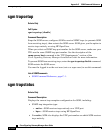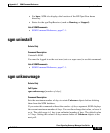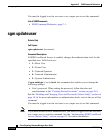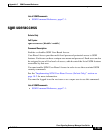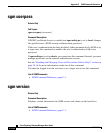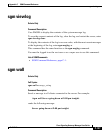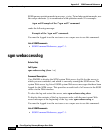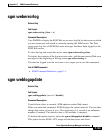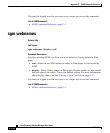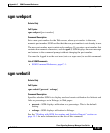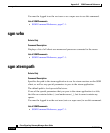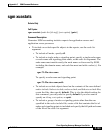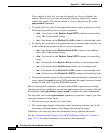
Appendix C SGM Command Reference
sgm xuastats
C-134
Cisco Signaling Gateway Manager User Guide
OL-5742-01
If you specify a node-list, you can also specify an id-tag to identify the
reports. The id-tag can be any meaningful character string, but it cannot
contain any spaces. The default value for id-tag is the process ID of the
sgm xuastats command.
• To specify the sort order for an application server report, specify one of the
following keywords for the sort-option argument:
–
-sfm—Sort based on the Packets From MTP3 column, in descending
order. This is the default setting.
–
-sta—Sort based on the Packets To ASPs column, in descending order.
• To specify the sort order for an application server process report, specify one
of the following keywords for the sort-option argument:
–
-sfa—Sort based on the Packets From ASPs column, in descending
order. This is the default setting.
–
-sfm—Sort based on the Packets From MTP3 column, in descending
order.
–
-sre—Sort based on the Receive Errors column, in descending order.
–
-sse—Sort based on the Send Errors column, in descending order.
–
-sta—Sort based on the Packets To ASPs column, in descending order.
–
-stm—Sort based on the Packets To MTP3 column, in descending order.
• To disable automatic output to the terminal when running this command in a
script, specify the quiet keyword. SGM generates the report in export format,
which you can view using the SGM Web interface.
Before entering this command, you must enable SGM to generate accounting
statistics reports for application servers and application server processes. See the
description of the sgm statreps [xua | noxua] command for more information.
The first time you use the sgm xuastats command to generate a report, you must
enter the command at least twice:
• The first entry gets the first set of raw data.
• The second entry begins calculating useful accounting statistics and, if the
data being collected appears valid, begins generating the report.
Thereafter, you need only enter this command once to generate the report.
See the “Generating and Viewing Custom SGM Statistics Reports” section on
page 15-113 for more information on the use of this command.




